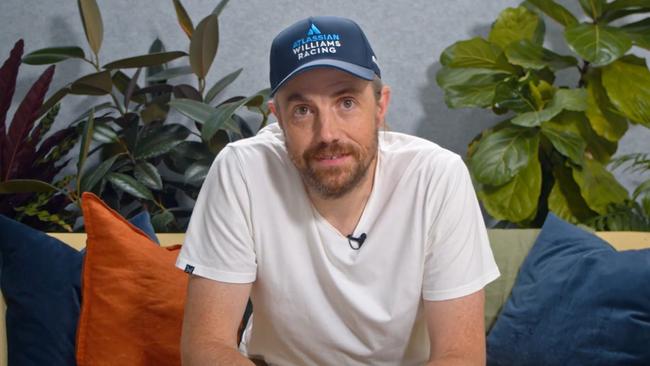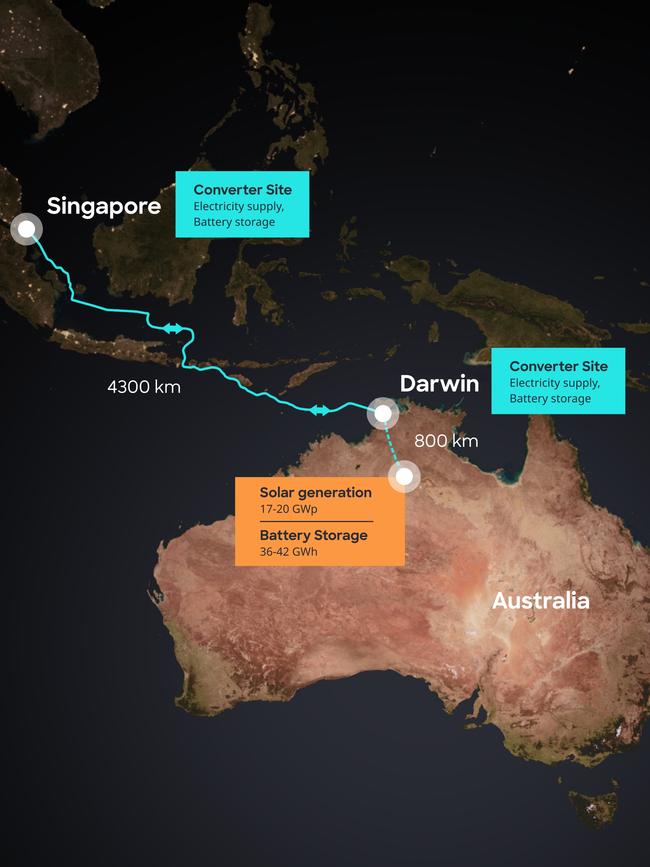Mike Cannon-Brookes ignites $40bn SunCable funding
One of the world’s biggest renewable energy projects will seek external funding as Mike Cannon-Brookes tests financiers’ appetite for the giant SunCable project.
Business
Don't miss out on the headlines from Business. Followed categories will be added to My News.
Mike Cannon-Brookes’ Grok Ventures has approached external investors for the first time about funding an initial tranche of its $40bn SunCable development, as the tech tycoon tests financiers’ appetite to bankroll one of the world’s largest renewable energy projects. The Australian can reveal Grok, which beat Cannon-Brookes’ fellow billionaire Andrew Forrest for control of SunCable, has started early stage talks with third-party investors.
The initial discussions with banks and wealthy families lay the groundwork for a series of bumper capital raisings should Grok proceed with a final investment decision in 2027.
The move follows SunCable winning environmental approvals from the Albanese and Northern Territory governments in 2024 while progressing talks with Indonesia over a subsea cable route through its waters before reaching customers in Singapore.
While Mr Cannon-Brookes’ private investment vehicle Grok is expected to fund some of the capital for the development, most would likely be funded from external investors.
The Atlassian co-founder separated from his wife Annie in 2023, sparking a carve-up of their $23bn estate, which remains under negotiation.

Sources said Grok chief executive Tan Kueh along with other executives were involved in setting up talks with investors through March as the massive clean energy project entered a pivotal 24-month period ahead of sanctioning the facility in 2027.
The project, which plans to include the world’s largest solar plant, battery and longest undersea power cable, would be a defining moment for Mr Cannon-Brookes, who has taken a prominent role in leading Australia’s energy transition through his advocacy stake in AGL Energy.
In its first iteration, SunCable has plans to deliver 900MW of green power to industrial customers in Darwin. The project also aims to supply 1.75GW of electricity to Singapore by an undersea cable stretching more than 4000km.
Industry sources previously have said they instead expected the project to develop the solar and storage near Darwin and then sell the cheap energy domestically. The presence of Quinbrook in the winning Grok consortium adds to those suggestions. Quinbrook is one of the world’s largest solar developers.
The scale of building the international project has been questioned, with critics tentative about the investment rationale for sending renewable energy to Singapore.
At 4200km, the link to Singapore would be more than five times bigger than the longest submarine link yet proposed – the 767km Viking link between Britain and Denmark – testing engineering capabilities and exposing the project to sovereign risk as it flows near Indonesian territorial waters.

The Australia-Asia Power Link will be the biggest solar farm in Australia and generate up to four gigawatts of renewable energy. The 12,000ha solar farm project is on a former pastoral station between Elliott and Tennant Creek. Environmental approvals include an 800km transmission line to Darwin and an underwater cable to the end of Australian waters.
Despite the funding challenge, the external environment for clean energy remains strong.
More than $9bn worth of renewable energy projects secured financial commitments in 2024 – the highest in six years – new data from the Clean Energy Council has shown, buoying hopes that Australia could see a much-anticipated rapid increase in zero emission capacity.
The CEC said its data showed the pace of new renewable energy projects materially increased during the last three months of 2024 with seven new large-scale renewable energy projects, representing 1598MW of new generation capacity, and $2.4bn of capital investment securing financial commitment.
The CEC said there were currently 88 renewable electricity generation projects that had reached financial commitment or were under construction, representing 13.2GW of capacity in the pipeline.
There were also 52 committed storage projects in development, equivalent to 10.5GW/26.3GWh in capacity/energy output. These pipeline projects represent at least $36.5bn worth of capital investment.
Earlier in March Mr Cannon-Brookes won a court fight against his once-trusted family office executive.
Cannon-Brooke Services former company secretary Kevin Chiu has been ordered to hand over his personal devices and not to destroy any confidential information in his possession, after he allegedly leaked an email containing a folder called “HR back up” to Mr Cannon-Brookes’ estranged wife, Annie, and the company’s ex-chief financial officer, Catherine Manuel.
The folder is said to have contained nearly 1000 files including employment details, employee tax and superannuation details, medical certificates, visa and police check details, and committee minutes and meeting papers, according to a judgment delivered by NSW Supreme Court judge Kate Williams on Tuesday.
The tech billionaire in 2023 described AGL as “one of the most toxic companies on the planet”, although he has since made only fleeting comments about the performance of Australia’s largest electricity generator.
Mr Cannon-Brookes opposed AGL’s proposed demerger of its retail and coal-focused generation businesses as it was “not fully thought through” and he believed was not in the best interests of shareholders.
More Coverage
Originally published as Mike Cannon-Brookes ignites $40bn SunCable funding
Read related topics:Climate Change




